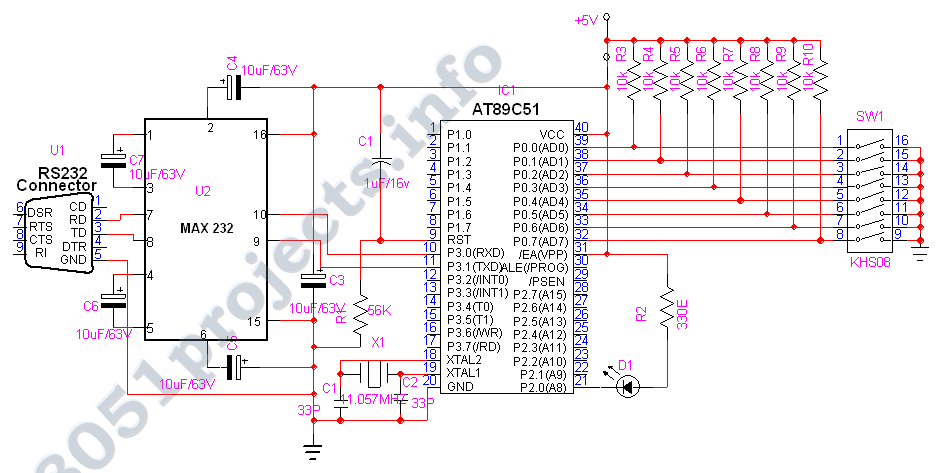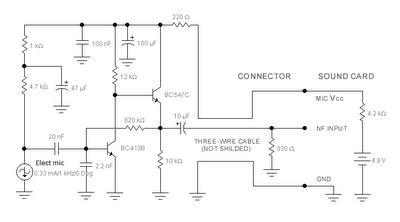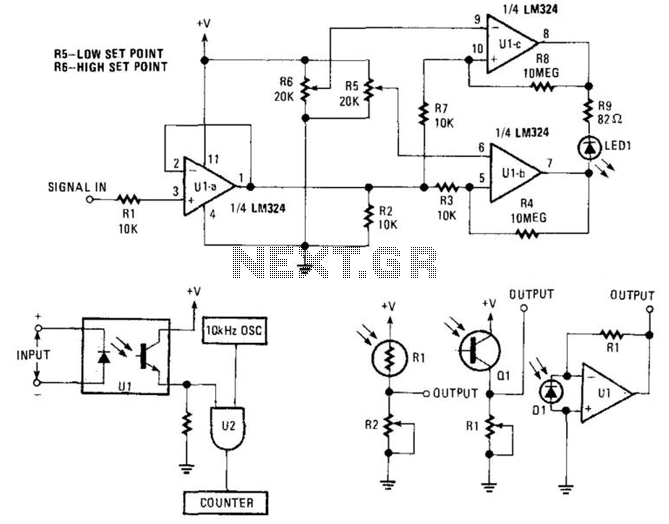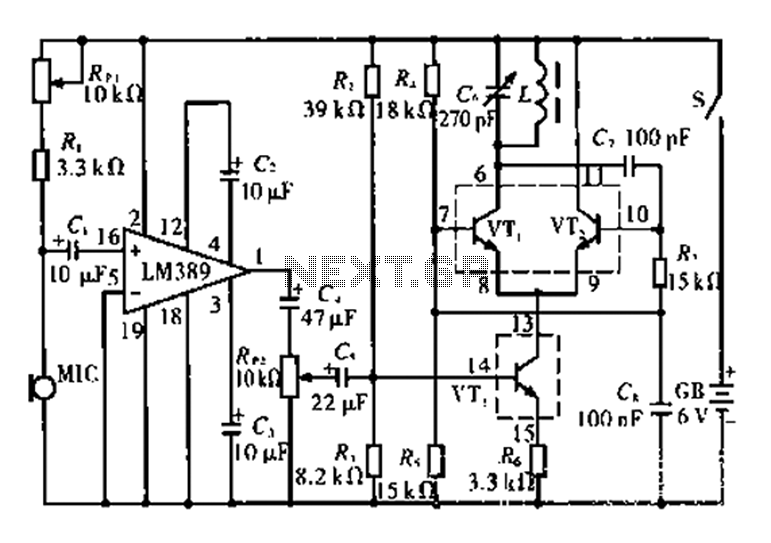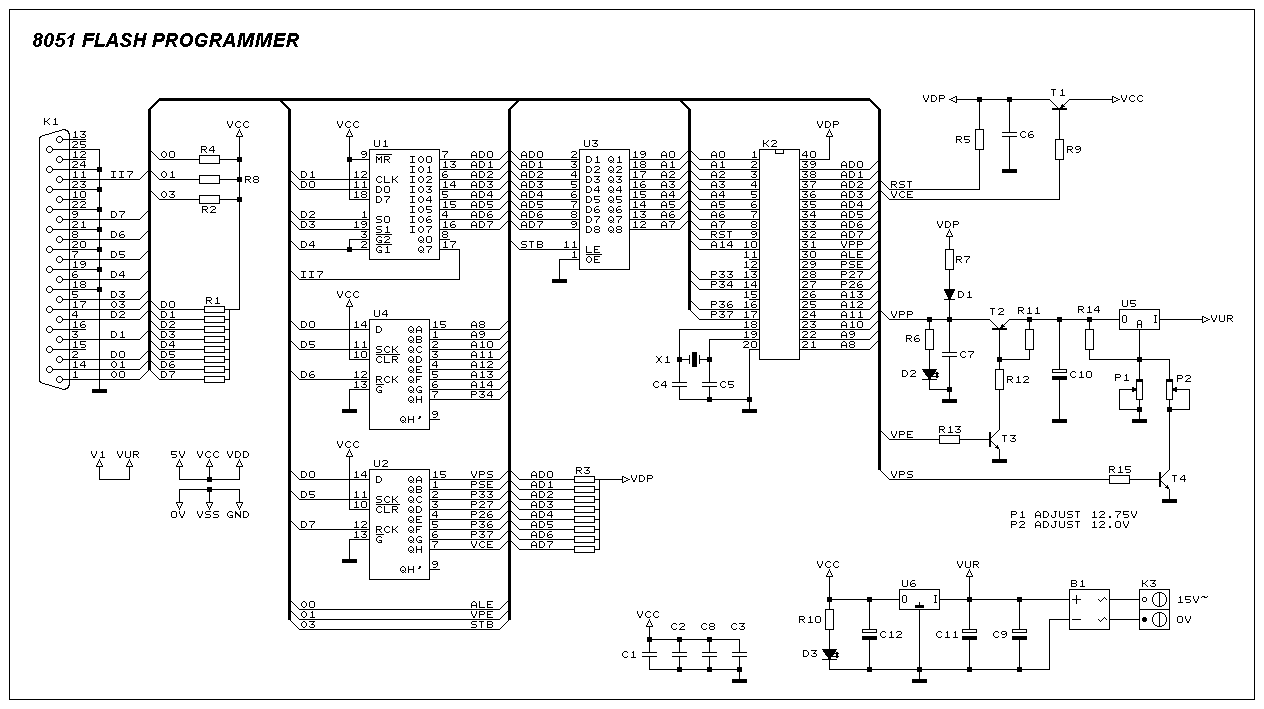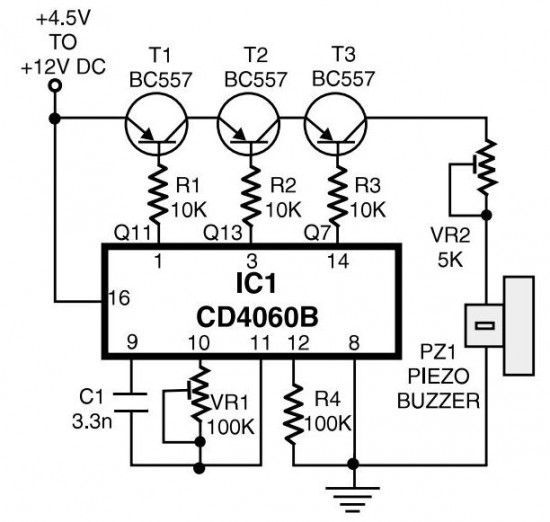
Micro Function Generator
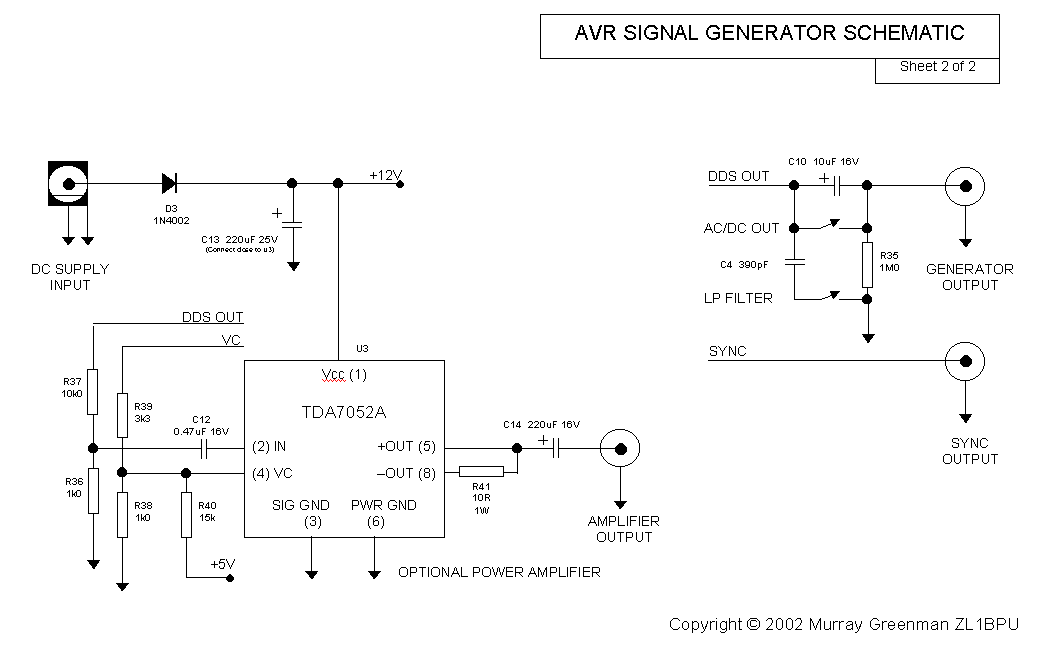
There are two main types of oscillators: the most common is the Wein Bridge oscillator variety, which has low distortion but offers only sine wave output and can suffer from amplitude bounce as frequency changes. The second type, which provides greater versatility in waveform and frequency range, typically lacks stability and accuracy. This unit meets all these requirements and is compact enough to fit in the palm of a hand; it is battery-operated and controlled via a PC or computer terminal, without a conventional front panel. The generators are relatively inexpensive to construct, requiring only two or three integrated circuits (ICs) and a couple of transistors. One of the ICs is an AVR RISC microcontroller, which is both affordable and powerful. It operates using a Direct Digital Synthesis (DDS) technique developed by Jesper Hansen to generate highly accurate signals. Some features of the Function Generator include customizable parameters such as frequency range, step size, and frequency response to suit various applications. The simple PC control panel for the generator displays a 4 MHz version in operation, with an upper limit of about 133 kHz. The absolute maximum frequency limit of any generator utilizing this microcontroller technique is determined by the maximum clock frequency (currently 16 MHz), setting the upper limit of the generator to approximately 500 kHz, with no lower limit specified. A 12.8 MHz version is available for use as an exciter for the Amateur LF bands. Power for the unit is supplied by a small 5V regulator, which operates from a DC source (battery or AC adapter) with an output range of 6V to 15V, and includes reverse voltage protection. RS232 communication with the PC employs simple transistor level shifters. The transmit signal from the microcontroller requires a negative voltage supply, which is conveniently derived from the normally idle PC transmit data line. The communication is half-duplex, operating at a data rate of 19200 bps (19200-N-8-1). Except during startup, the generator only responds when prompted. The microcontroller, an Atmel AT90S2313-10PC, runs a straightforward main program consisting of a rapid sampling process that retrieves data from one of four tables at a fixed rate to output the data. The Direct Digital Synthesis technique does not function by sequentially stepping through a table of waveform values at a variable rate; instead, it uses a fixed high frequency (approximately 1 MHz) sampling rate and a user-controlled step size to address the table. The phase accumulator, which controls the table address, and the user-controlled step value are both large (24-bit) numbers. The most significant eight bits of the accumulator select the correct table value at each sample point. The eight-bit digital values at the output port are converted to an analog waveform using a simple R-2R resistive ladder. An anti-aliasing interpolative filter, also known as a low-pass filter, reconstructs the required waveform at the output. While the synthesizer is operational, interruptions are not permitted, as they would distort the waveform. Commands to modify operating parameters are received through the serial communication link, which operates via an interrupt, temporarily halting the generator while processing the command. The interruption duration can be as brief as 2 µs (in sweep mode) or extend for several milliseconds, depending on the command issued. At audio frequencies, the glitch in the generated waveform caused by shorter commands is typically imperceptible. Commands are available to adjust the frequency, apply minute offsets to the frequency, and more.
The described function generator is an advanced electronic device that utilizes a combination of integrated circuits and microcontroller technology to provide precise waveform generation for various applications. The use of Direct Digital Synthesis allows for high-resolution control over output frequencies and waveforms, making it suitable for testing and experimentation in both educational and professional environments. The compact design and battery operation facilitate portability, enabling users to deploy the generator in various settings without being constrained by power sources.
The microcontroller at the heart of the system plays a crucial role in managing the synthesis process, ensuring that waveform generation remains stable and accurate. The implementation of a phase accumulator enhances the precision of the output by allowing for fine-tuning of frequency adjustments, which is essential for applications requiring specific frequency characteristics. The R-2R ladder network for digital-to-analog conversion is a cost-effective solution that delivers satisfactory performance for generating analog signals from digital values.
Furthermore, the communication interface via RS232 allows for easy integration with computers, enabling users to control the generator remotely and automate testing processes. The half-duplex communication ensures efficient data transfer while minimizing conflicts in signal transmission. The careful design considerations, including reverse voltage protection and the ability to handle various power supply levels, contribute to the reliability and robustness of the device.
Overall, this function generator represents a significant advancement in electronic waveform generation, combining affordability with high performance, making it an invaluable tool for engineers, educators, and hobbyists alike.There are two main types: the most common is the Wein Bridge oscillator variety, which has low distortion, but offers only sinewave output and can suffer from amplitude bounce as you change frequency. The type which offers greater versatility of waveform and frequency range, the usual function generator type, typically lack stability and accuracy.
This unit meets all these requirements, and is small - fits in the palm of your hand - and is battery operated. It also has no "front panel" - you control it from a PC or computer terminal. The generators are quite inexpensive to build - just two or three ICs and a couple of transistors. One of the ICs is an AVR RISC microcontroller - inexpensive, and quite powerful. It operates in an unusual manner, using a Direct Digital Synthesis (DDS) technique developed by Jesper Hansen to create very accurate signals. Some of the features of the Function Generator are: Many of the parameters, such as frequency range, step size and frequency response can be tailored to suit other applications.
The picture below, of the simple PC control panel for the generator, shows a 4MHz version in use, with an upper limit of about 133 kHz. The absolute upper frequency limit of any generator using this microcontroller technique is set by the maximum clock frequency (currently 16 MHz).
The upper limit of the generator is thus about 500 kHz. There is no lower limit. A 12. 8MHz version for use as an Exciter for the Amateur LF bands is also available. Power for the unit comes from a tiny 5V regulator, which runs from a DC supply (battery or AC adaptor) with an output of between 6V and 15V. The supply is reverse voltage protected. The RS232 communications with the PC uses simple transistor level shifters. The transmit signal from the microcontroller requires a negative voltage supply, and for simplicity, this voltage is derived from the mostly idle PC transmit data line, which is normally negative.
Communications is half - duplex, using a 19200 bps data rate (19200-N-8-1). Except at start-up, the generator only replies when spoken to. The microcontroller, an Atmel AT90S2313-10PC, has a very simple main program consisting of a very tight and very fast sampling process, taking data from one of four tables at a fixed rate, to place the data on an output port. The Direct Digital Synthesis technique works not as you would expect, by stepping sequentially through a table of waveform values at a variable rate, but instead uses a fixed very high frequency (about 1 MHz) sampling rate, and a user controlled step size to address the table.
The counter used to control the table address is called the phase accumulator, and this accumulator and the user controlled step value are both very large (24 bit) numbers. The most significant eight bits of the accumulator select the correct table value at each sample point.
The eight bit digital values at the port are converted to an analog waveform by a simple R-2R resistive ladder. The required waveform is reconstructed by an anti-aliasing interpolative filter at the output (otherwise known as a low pass filter!) While the synthesizer is running, nothing is allowed to interrupt the process, as interruptions would slow down or distort the waveform.
Commands to change the operating parameters are received from the serial communications link, which operates via an interrupt and stops the generator while the command is processed. The interruption can be as short as 2 µs (in sweep mode), or as long as several milliseconds, depending on the command sent.
At audio frequencies the glitch in the generated waveform caused by the shorter commands is hardly noticeable. Commands are provided to change the frequency, offset the frequency (by microscopic amounts), ch 🔗 External reference
The described function generator is an advanced electronic device that utilizes a combination of integrated circuits and microcontroller technology to provide precise waveform generation for various applications. The use of Direct Digital Synthesis allows for high-resolution control over output frequencies and waveforms, making it suitable for testing and experimentation in both educational and professional environments. The compact design and battery operation facilitate portability, enabling users to deploy the generator in various settings without being constrained by power sources.
The microcontroller at the heart of the system plays a crucial role in managing the synthesis process, ensuring that waveform generation remains stable and accurate. The implementation of a phase accumulator enhances the precision of the output by allowing for fine-tuning of frequency adjustments, which is essential for applications requiring specific frequency characteristics. The R-2R ladder network for digital-to-analog conversion is a cost-effective solution that delivers satisfactory performance for generating analog signals from digital values.
Furthermore, the communication interface via RS232 allows for easy integration with computers, enabling users to control the generator remotely and automate testing processes. The half-duplex communication ensures efficient data transfer while minimizing conflicts in signal transmission. The careful design considerations, including reverse voltage protection and the ability to handle various power supply levels, contribute to the reliability and robustness of the device.
Overall, this function generator represents a significant advancement in electronic waveform generation, combining affordability with high performance, making it an invaluable tool for engineers, educators, and hobbyists alike.There are two main types: the most common is the Wein Bridge oscillator variety, which has low distortion, but offers only sinewave output and can suffer from amplitude bounce as you change frequency. The type which offers greater versatility of waveform and frequency range, the usual function generator type, typically lack stability and accuracy.
This unit meets all these requirements, and is small - fits in the palm of your hand - and is battery operated. It also has no "front panel" - you control it from a PC or computer terminal. The generators are quite inexpensive to build - just two or three ICs and a couple of transistors. One of the ICs is an AVR RISC microcontroller - inexpensive, and quite powerful. It operates in an unusual manner, using a Direct Digital Synthesis (DDS) technique developed by Jesper Hansen to create very accurate signals. Some of the features of the Function Generator are: Many of the parameters, such as frequency range, step size and frequency response can be tailored to suit other applications.
The picture below, of the simple PC control panel for the generator, shows a 4MHz version in use, with an upper limit of about 133 kHz. The absolute upper frequency limit of any generator using this microcontroller technique is set by the maximum clock frequency (currently 16 MHz).
The upper limit of the generator is thus about 500 kHz. There is no lower limit. A 12. 8MHz version for use as an Exciter for the Amateur LF bands is also available. Power for the unit comes from a tiny 5V regulator, which runs from a DC supply (battery or AC adaptor) with an output of between 6V and 15V. The supply is reverse voltage protected. The RS232 communications with the PC uses simple transistor level shifters. The transmit signal from the microcontroller requires a negative voltage supply, and for simplicity, this voltage is derived from the mostly idle PC transmit data line, which is normally negative.
Communications is half - duplex, using a 19200 bps data rate (19200-N-8-1). Except at start-up, the generator only replies when spoken to. The microcontroller, an Atmel AT90S2313-10PC, has a very simple main program consisting of a very tight and very fast sampling process, taking data from one of four tables at a fixed rate, to place the data on an output port. The Direct Digital Synthesis technique works not as you would expect, by stepping sequentially through a table of waveform values at a variable rate, but instead uses a fixed very high frequency (about 1 MHz) sampling rate, and a user controlled step size to address the table.
The counter used to control the table address is called the phase accumulator, and this accumulator and the user controlled step value are both very large (24 bit) numbers. The most significant eight bits of the accumulator select the correct table value at each sample point.
The eight bit digital values at the port are converted to an analog waveform by a simple R-2R resistive ladder. The required waveform is reconstructed by an anti-aliasing interpolative filter at the output (otherwise known as a low pass filter!) While the synthesizer is running, nothing is allowed to interrupt the process, as interruptions would slow down or distort the waveform.
Commands to change the operating parameters are received from the serial communications link, which operates via an interrupt and stops the generator while the command is processed. The interruption can be as short as 2 µs (in sweep mode), or as long as several milliseconds, depending on the command sent.
At audio frequencies the glitch in the generated waveform caused by the shorter commands is hardly noticeable. Commands are provided to change the frequency, offset the frequency (by microscopic amounts), ch 🔗 External reference
